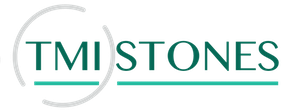Bài học thuộc :
Quản lý kho hàng
Trạng thái bài học :
Chưa hoàn thành
Các thuật ngữ thuộc phân hệ kho hàng
- Warehouse (kho hàng): Một kho hàng trong Odoo là một nơi dùng để lưu trữ sản phẩm. Nó là một kho hàng hữu hình hoặc là ảo. Nó có thể là một nhà kho hoặc một nơi lưu trữ.
- Location (địa điểm): Địa điểm được sử dụng để cấu trúc các vùng (khu vực) lưu trữ trong kho hàng. Ngoài các địa điểm nội bộ (kho hàng của bạn), Odoo còn có các địa điểm dành cho nhà cung cấp, khách hàng, đối tác, hàng hoá thất lạc, hàng tồn kho, hoặc hàng hoá bị loại bỏ v.v.
- Lots (Lô hàng): lô sản phẩm được xác định bằng mã vạch hoặc số sê-ri duy nhất. Tất cả các mặt hàng trong cùng một lô hàng là một loại sản phẩm. (ví dụ: một bộ gồm 24 chai) Thông thường, các lô hàng có được do sản xuất ra hoặc mua hàng.
- Serial Number (Số sê ri): ố sê-ri là số nhận dạng duy nhất của một sản phẩm cụ thể. Về mặt kỹ thuật, số sê-ri tương tự như một lô hàng nhưng chỉ có 1 hàng hoá duy nhất.
- Unit of Measure (Đơn vị đo lường): Xác định cách thức số lượng sản phẩm được thể hiện. Ví dụ như kg, Pound, lô 24, tá. Đơn vị đo lường cùng loại (ví dụ: kích thước) có thể được chuyển đổi cho nhau (m, cm, mm) bằng một tỷ lệ cố định.
- Consumable (Hàng tiêu dùng): Đó là một loại sản phẩm mà bạn không muốn quản lý chúng tồn kho (không có số lượng trong kho hoặc cần dự báo) nhưng vẫn có thể nhận và giao hàng. Khi bạn cần loại sản phẩm này, Odoo luôn cho rằng bạn có đủ hàng (Có thể từ nhà cung cấp).
- Stockable (Có thể lưu kho): Ngược với loại sản phẩm trên, đây là loại sản phẩm mà bạn muốn quản lý chúng với số lượng tồn trong kho.
- Package (Gói sản phẩm): Là một bộ bao gồm nhiều, hoặc vài ba sản phẩm riêng lẻ (như kiểu combo), nó có thể được xác định bởi số lô hoặc số sê ri. Ví dụ một bộ sản phẩm ấm chén uống trà được cấu thành từ vài sản phẩm chén và một sản phẩm ấm.
- Procurement: A procurement is a request for a specific quantity of products to a specific location. Procurement are automatically triggered by other documents: Sale orders, Minimum Stock Rules, and Procurement rules. You can trigger the procurement manually. When procurements are triggered automatically, you should always pay attention for the exceptions (e.g. a product should be purchased from a vendor, but no supplier is defined).
- Routes: Routes define paths the product must follow. Routes may be applicable or not, depending on the products, sales order lines, warehouse,… To fulfill a procurement, the system will search for rules belonging to routes that are defined in the related product/sale order.
- Push Rules: Push rules trigger when products enter a specific location. They automatically move the product to a new location. Whether a push rule can be used depends on applicable routes.
- Procurement Rules or Pull Rules: Procurement rules describe how procurements on specific locations should be fulfilled e.g.: where the product should come from (source location), whether the procurement is MTO or MTS,…
- Procurement Group: Routes and rules define inventory moves. For every rule, a document type is provided: Picking, Packing, Delivery Order, Purchase Order,… Moves are grouped within the same document type if their procurement group and locations are the same.
- Stock Moves: Stock moves represent the transit of goods and materials between locations.
- Quantity On Hand: The quantity of a specific product that is currently in a warehouse or location.
- Forecasted Quantity: The quantity of products you can sell for a specific warehouse or location. It is defined as the Quantity on Hand – Future Delivery Orders + Future incoming shipments + Future manufactured units.
- Reordering Rules: It defines the conditions for Odoo to automatically trigger a request for procurement (buying at a supplier or launching a manufacturing order). It is triggered when the forecasted quantity meets the minimum stock rule.
- Cross-Dock: Cross-docking is a practice in the logistics of unloading materials from an incoming semi-trailer truck or railroad car and loading these materials directly into outbound trucks, trailers, or rail cars, with no storage in between. (does not go to the stock, directly from incoming to packing zone)
- Drop-Shipping: move products from the vendor/manufacturer directly to the customer (could be retailer or consumer) without going through the usual distribution channels. Products are sent directly from the vendor to the customer, without passing through your own warehouse.
- Removal Strategies: the strategy to use to select which product to pick for a specific operation. Example: FIFO, LIFO, FEFO.
- Putaway Strategies: the strategy to use to decide in which location a specific product should be set when arriving somewhere. (example: cables goes in rack 3, storage A)
- Scrap: A product that is broken or outdated. Scrapping a product removes it from the stock.
